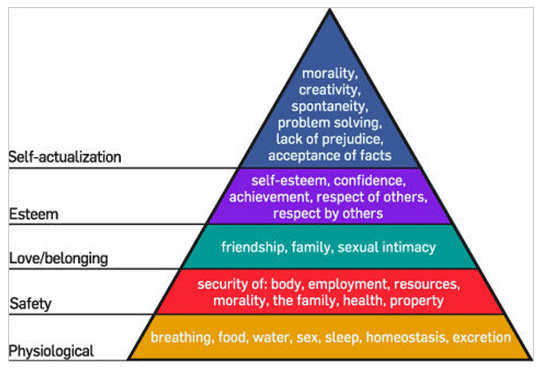Poultry Production Methods
Alternative systems for current production methods
Published: October 21, 2011
By: Erik Helmink (Venco Groep)
Summary
Current production methods for intensive livestock farming are developed with the goal to reach for maximum production efficiency. In some areas these production methods are now facing pressures, to which they have to adopt, in order to fulfill the conditions of the future market. Three major pressures on the supply chain of poultry products, that are discussed in this paper, are food safety, animal welfare and the environmental impact of production methods. The hierarchy of needs is described with respect to the Maslow pyramid, with which the developments within consumer markets can be predicted.
The Maslow pyramid as prediction tool for market conditions
As proposed by Abraham Maslow in his 1943 paper 'A theory of human motivation', the stage of moral development changes the needs of humans. The first level covers basic physiological needs for survival, like air, water and food. In the second level of safety needs, one starts to care about his personal and financial security, as well as his health and well-being. It is in this level that consumers start to pay attention to basic food safety. The third level of human needs are social and involve feelings of belongingness. Food security becomes even more important, as one cares about the well being of his relatives. Buying arguments for food in this stage are mostly connected to price. In the fourth level, one finds it important to be respected and to have self-esteem. It is in this stage that motivations start to change and there is an increased concern about the impact of one's consumption to the environment. In the fifth stage of the Maslow pyramid, self-actualization, one has the need to pertain his full potential. In this stage one cares about his moral footprint. The consumption of animal welfare friendly products can benefit to this.

Food safety of poultry products
The issue of food safety is well addressed worldwide in the poultry sector, for problems that have short term impact on human health, like salmonella bacteria. These food safety issues are closely connected to production hygiene and already start early in the production chain. The use of automatic nest boxes in parent stock housing, for instance, has proven to improve hatching egg hygiene and reduces bacteria levels in the hatchery.
In well developed countries, there also seems to be an increased concern for long term health issues. Examples in this respect, are the impact of egg consumption on cholesterol levels and antibiotic resistance due to consumption of poultry meat. Some countries now try to set up programs to reduce antibiotic use for poultry production. As the use of antibiotics is quite common in broiler production, in order to keep the birds inline during production, this will ask a different mindset of poultry producers. Recent studies now focus on the improvement of the robustness of chickens, and systems are designed to contribute to an optimal development of broilers. This all can contribute to the reduction of antibiotics in the broiler production chain.
Environmental issues
Recent studies show that poultry production has very low impact on global warming. Furthermore it is known that poultry is a very effective meat production source, as feed conversion are very effective. Still there are pressures that can affect future poultry production methods. Most important to this respect is the output of ammonia and fine dust, which can harm the local environment of the poultry production facility, and the use of natural resources. There are many countries that now have regulations concerning the output of ammonia and require specific technology to reduce these levels. Reduction of ammonia levels can be reached by forced drying of manure and frequent manure removal from poultry houses.
Care for animal welfare
High up in the Maslow pyramid, one starts to care for the welfare of the animals that are kept for the production of one's food. This can be observed, when the sales of welfare friendly and non-caged eggs, is increasing. Additional to this, the strength of animal welfare activists grows, and governments adapt regulations in respond to these pressures. The EU cage-ban, which is affective from January 1st 2012 onwards, is one example to this trend. The production of consumption eggs in battery cages, which is known to be very effective, is now restricted, and consumption egg producers had to look for alternative solutions.
In the presentation, the above theory will be further explained and adapted to market trends. Furthermore, some alternatives will be described to the audience, which show the impact of moral development in the world to local production methods.
In the presentation, the above theory will be further explained and adapted to market trends. Furthermore, some alternatives will be described to the audience, which show the impact of moral development in the world to local production methods.
Content from the event:
Related topics:
Authors:
HatchTech Incubation
Recommend
Comment
Share

Would you like to discuss another topic? Create a new post to engage with experts in the community.








.jpg&w=3840&q=75)